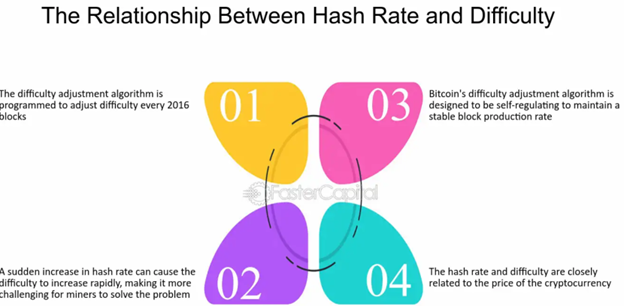January 6, 2025
Bitcoin's Quantum Resistance Could Evolve into the Future
Dear Subscriber,
 |
| By Marija Matic |
As quantum computers move closer to reality, they bring both marvel and challenge to the cryptographic world.
Bitcoin (BTC, “A”), now a $2 trillion digital asset, stands ready to adapt its defenses for this new era.
Some crypto critics view quantum computing solely as a threat. Quantum computers may eventually speed up so much that they will undermine the way Bitcoin is mined or stored. If that happens, the security of the Bitcoin blockchain will be fundamentally broken.
But Bitcoin's architecture reveals a different narrative — one built on innovation and resilience.
Thanks to its robust design that prioritizes stability over hasty changes and its community of developers, the Bitcoin blockchain is able to maintain clear paths for evolution when needed.
And as quantum computing advances, Bitcoin's forward-thinking community is already developing solutions to reinforce the network's security in two critical areas.
Quantum Evolution 1: Wallet Security
Bitcoin's most pressing quantum challenge lies in its digital signature system (ECDSA).
Here's how it works: When you own Bitcoin, you have two keys — a private key and a public key.
Think of them like your house key and your home address. One is something only you have that allows you to access your property. The other is publicly available so others can send you things.
These keys are linked through complex math that's currently impossible for regular computers to crack.
And there’s the threat: The same algorithms that regular computers are stumped by are nothing to a powerful quantum computer.
That would be like someone being able to create an exact copy of your house key just by knowing your address.
With this capability, an attacker could potentially steal Bitcoin from any address where the public key is known.
However, there are ways to defend against this.
The first and simplest solution is the digital equivalent of regularly changing your locks. Users can move their BTC to new addresses that haven't been used before.
This way, even if someone cracks an old address, they'll only find an empty vault.
Another option is still in development but has promise. Users could opt for special quantum-resistant "multi-signature" wallets. These basically work like adding multiple locks on a door.
But both of these options rely on additional action on the user’s end to stay safe. For a more comprehensive solution, Bitcoin can upgrade its entire system to use new "quantum-proof" signature methods.
These are puzzles so sophisticated that even quantum computers can't solve them.
Think of it like upgrading from a simple lock to a high-tech bank vault. And the best part is that you, as a user, wouldn’t have to do anything. These upgrades are possible through Bitcoin's built-in update mechanisms, similar to how your smartphone or computer will update its security features.
While these new methods have complex names — like FALCON, SPHINCS+ and Kyber — they all serve one purpose: Keep Bitcoin secure in a quantum world.
Thankfully, quantum computers aren't quite developed enough to pose an immediate threat yet. That gives the Bitcoin community time to propose and implement these changes carefully and ensure a smooth transition for everyone in the future.
More on that in a bit. For now, I want to dive into …
Quantum Evolution 2: Mining Safety
The second potential impact of quantum computers is on Bitcoin's mining system, which uses SHA-256 hashing.
Think of Bitcoin mining like a global competition. Computers around the world compete to solve complex mathematical puzzles by guessing millions of numbers until they find the right one.
And while quantum computers could solve these puzzles faster using Grover's Algorithm, the impact would be manageable. It would be like upgrading from picking a lock manually to using an electronic lock-picking tool — faster, but not instantaneous.
The quantum advantage would mainly affect mining competition. Those who could use quantum computing would … making some miners more powerful than others.
Market dynamics and antitrust regulations would likely prevent quantum computing monopolies. Eventually, it’s likely that this technology will be more accessible across the mining community.
Still, the best protection to keep things in order will be Bitcoin’s built-in difficulty adjustment system.
That’s because the difficulty of the puzzles that miners solve to earn Bitcoin is dynamic. If more powerful machines are introduced to the ecosystem and new BTC is produced too quickly — i.e., the puzzles are solved too quickly — it’ll adjust itself, like a vault that becomes more sophisticated as lock-picking tools advance.

Bitcoin’s system will adjust itself to ensure a stable block production rate. This is a ready-made defense against quantum mining monopolies.
Source: FasterCapital.
Click here to see full-sized image.
After quantum computers solve the first 2,016 blocks - much faster than the usual two-week period — generating about 6,300 BTC as rewards — the Bitcoin blockchain would automatically start to increase the computational challenge, and the situation would normalize in a few weeks.
This means even if quantum computers caused an initial disruption in the mining process, it wouldn’t last long.
And even in an unlikely, extreme scenario where quantum computers remain exclusive to major tech companies, Bitcoin has additional options. Namely, the network can switch to quantum-resistant consensus methods. This could mean moving away from mining entirely to some type of proof-of-stake consensus mechanism or a hybrid system.
But any changes of that scale would be gradual to ensure the network keeps running smoothly.
In fact, Bitcoin already has a way to prepare for the quantum future.
The Lightning Network: Bitcoin’s Layer-2 Test Lab
Behind the scenes, Bitcoin's developers aren't sitting idle. They're monitoring quantum computing breakthroughs, developing new security proposals, and exploring innovative solutions like Schnorr signatures. It's like having a team of architects constantly reinforcing and upgrading a fortress before any potential siege.
The Lightning Network is Bitcoin's speed-boosting Layer-2 blockchain. And it could be the perfect testing ground for quantum resistance.
Think of it as Bitcoin's experimental lab, where new quantum-proof features can be tested without touching the main network.
If new features succeed on Lightning could later be implemented across the Bitcoin network.
This forward-thinking approach shows that while quantum computing brings new challenges, Bitcoin won’t just weather the storm. Its various safeguards and upgrade paths prove that the network is ready to evolve and grow into the future.
While we can't predict when quantum-related upgrades might become necessary or implemented, the groundwork for Bitcoin to do just that is already being laid.
Looking ahead, quantum resistance could be Bitcoin's most impressive upgrade yet.
While no one can predict prices or timelines with certainty, this enhanced security could propel Bitcoin to new heights. I wouldn’t be surprised to see BTC reach $1 million per coin at the end of the quantum upgrades.
That’s a bold declaration. But considering how quantum resilience could cement Bitcoin's position as the leading digital asset, it's a future worth imagining.
If you’re interested in Bitcoin’s long-term potential, I hope you’ve already loaded up.
With Bitcoin’s latest jump back above $100,000, it seems the No. 1 crypto’s latest correction is in the rearview mirror.
Best,
Marija Matić
Tidak ada komentar:
Posting Komentar